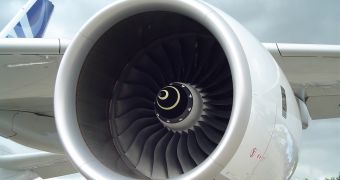3D printing is a very vague term. In essence, it means anything built via additive manufacturing, so it applies to anything from a hipster making plastic jewelry to Rolls Royce making engine parts.
The famous jet engine maker, who shares a name with the almost as famous car maker, plans to start using 3D printed parts in production models.
3D printing has been a reality in the industry for a few decades now, but only in the research and design phase, for things like rapid prototyping.
"3D printing opens up new possibilities, new design space," Dr. Henner Wapenhans, Rolls Royce's head of technology strategy, explained, as FT reports. "Through the 3D printing process, you’re not constrained [by] having to get a tool in to create a shape. You can create any shape you like."
Up until recently, the technology was still too expensive and too slow even for jet engine manufacturing, a slow and expensive process itself.
The draw of 3D printing for the aerospace industry in particular is the possibility to create parts that don't have any compromises in shape or performance caused by limitations in the manufacturing process.
With 3D printing, the parts can be exactly as the engineers imagine them, thick where they require strength, and thin where they need to be light.
Another advantage is that Rolls Royce could create the parts it needed when it needed them. Normally, with such specialized and low volume components that nonetheless require very complex manufacturing, it takes months or even more than a year to get the first batches after placing an order.
With 3D printing, the parts can go into production as soon as they're out of the testing phase. Likewise, any changes to the parts are trivial to make and don't require changing any production lines or tools.

 14 DAY TRIAL //
14 DAY TRIAL //